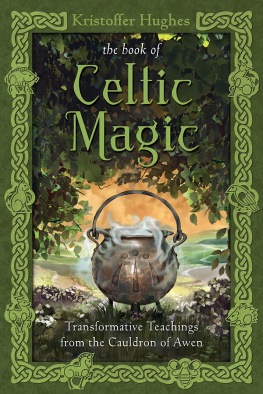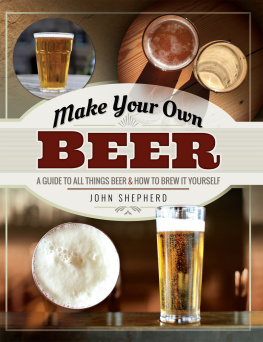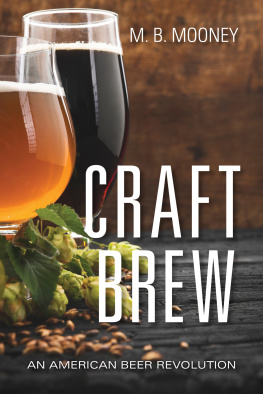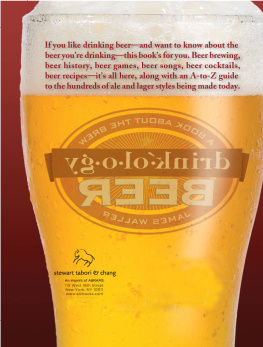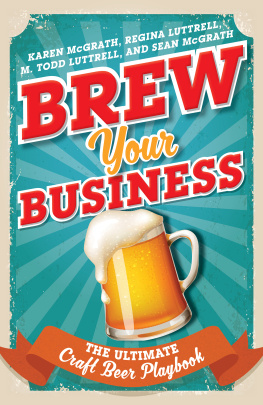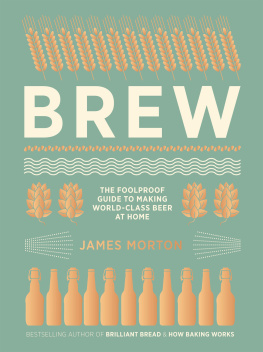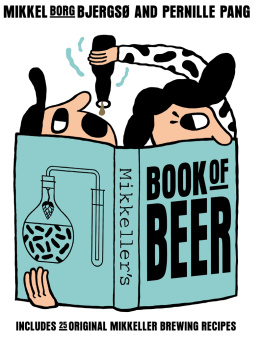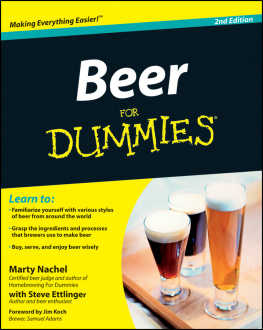FOREWORD
Without a doubt, brewing your own beer and enjoying the fruits of your labours is one of the most satisfying pastimes there is.
My own career in the brewing industry grew out of a strong interest in home brewing. As a young boy I was fascinated by everything related to beer and brewing perhaps fuelled by stories of my grandfather (who I never met) who was the head brewer of a local brewery. On family car journeys I would keep a log of every pub we passed, noting down the breweries whose names adorned each pub sign. When I started brewing my own beer, I sought to recreate the beers produced by those breweries, honing my recipes to get as close to the originals as possible. With each brew, I learned new techniques and made subtle adjustments. I made mistakes, too and certainly this book would have helped me avoid them but even mistakes can have serendipitous results. The first golden beer I brewed, for example, was the result of forgetting to add crystal malt to what should have been a darker ale.
I am as excited about brewing today as I was 33 years ago when I produced my first batch. As you prepare your own beer, whether using malt extract or more complex methods, you are bound to feel a similar sense of excitement, especially as the moment of truth arrives and having waited patiently for it to ferment and condition you can finally taste your brew.
Brewing your own beer at home is relatively simple and extremely rewarding. With a good cleanliness regime, careful control of temperature, and the freshest ingredients, you should be able to produce beer that is at least equal, if not superior, to anything produced by professional brewers. You may even decide to recreate abandoned beers and styles that may not have been produced commercially for generations. What is certain is that with so many hop varieties, malt variations, and yeast strains available, the possibilities for experimenting with different flavours are endless.
My career has always been driven by the simple joy of producing special, well-crafted beers. Whether you are brewing for your own consumption or are hoping to bask in the compliments of others, I hope this book will help you get as much enjoyment out of brewing as I do.
Forever thirsty,
Keith Bott MBE
Managing Director of Titantic Brewery and former Chairman of the Society of Independent Brewers
The Home Brew Beer Foreword
INTRODUCTION
If you enjoy drinking beer, then home brewing is the perfect hobby. Not only will you have the sense of satisfaction that comes from producing your own great-tasting beer, but you will also be able to create any beer style you like including those not readily available commercially.
FUN, FRUGAL, AND FRIENDLY
Home brewing is relatively easy and can work out at a fraction of the cost of buying beer in the shops. The chances are, of course, that you will want to reinvest any savings you make, perhaps by buying new equipment. Even so, you should still be able to break even, which is not a bad return for such an enjoyable and fulfilling hobby. As well as being cost effective, home brewing is a particularly unselfish interest, as there are always plenty of delicious samples to offer around. In fact, you will probably produce more beer than you can hope to drink so the more the merrier!
HOME-BREW BASICS
Making beer from a kit is no more difficult than preparing a ready meal and the results can be truly impressive. With the minimum of fuss you can make, ferment, and barrel a surprisingly good batch of beer. While many home brewers are content with this approach, if you are reading this book, you are probably seeking something more involved. Youll be happy to know that with just a little extra effort, the possibilities for producing professional and bespoke beers are almost endless.
MALT-EXTRACT BREWING
The next logical step up the home-brew ladder is to produce beer using malt extract. This is still a relatively straightforward process requiring minimal equipment, but one that allows you to experiment with a wider range of ingredients, all the time gaining in confidence. The satisfaction of following a recipe and creating a beer using raw ingredients adds so much to the final product. Using fresh hops, for example, makes a huge difference to the quality of the finished beer.
HONING YOUR SKILLS
Sooner or later, though, you will want to try your hand at the full-mash (or all-grain) method the holy grail of home brewing. There is an art to full-mash brewing that takes more time, research and practice, and you should think of it as an ongoing quest. As you temper and hone your skills, however, the quality of your brews will continue to improve. Just as importantly, you will be able to produce consistently good results and brew exactly the type of beer you intended at the outset. Many professional craft brewers started their journey as home brewers, honing their skills with small batches before scaling up; this means some of the best breweries in the world owe their existence to home brewing.
EXPLODING SOME MYTHS
You may have heard various home-brew horror stories involving exploding bottles and upset stomachs, or been put off by a bad experience in the past. Exploding bottles are a possibility, but an improbable one if you follow the instructions carefully and beer is unlikely to make you sick as the alcohol will kill off most forms of bacteria. Today, the quality and availability of home-brew ingredients are better than they have ever been, and there is a wealth of information, advice, and support available from local and online home-brew clubs and groups places where like-minded brewers share tips and advice. Whats more, the growing selection of well-organised home-brewing competitions allow keen home brewers to get valuable feedback on their beer, enabling them to improve their brewing skills.
SOMETHING FOR EVERYONE
In this book I have tried to cover as much ground as possible without getting too caught up in the details. Whole books have been written about yeast, for example, or brewing one particular style of beer, but I believe it is far better to master the basic techniques and methods first, before specializing in any one area.
The recipes in this book cover every major style of beer, so you should be able to find the perfect lager, ale, wheat beer, or mixed style for you. Some recipes are more difficult to brew than others, but you should simply regard these as a challenge. As with all crafts, the more care and effort you put in, the better the results will be, so dont worry if you dont get it quite right every time your beer will still taste good.





